The Huawei Watch 5 made me feel genuinely cared for, and that surprised me
I didn’t expect to connect with a smartwatch, but the Huawei Watch 5 proved me wrong

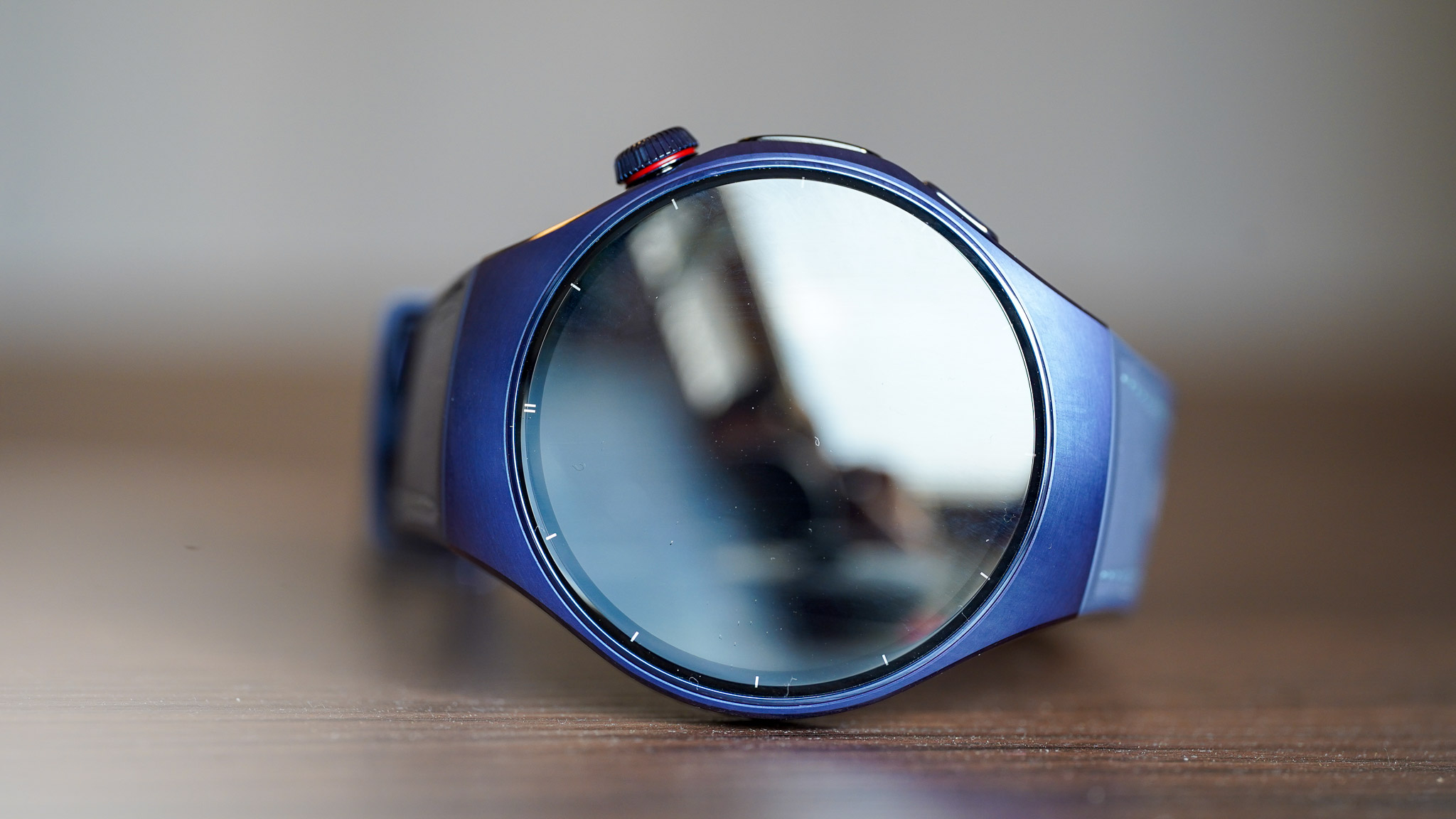
The Huawei Watch 5 is a sleek, health-focused smartwatch that’s edging closer to true all-in-one status. With standout sensors, sharp design and proactive tracking, it’s easily Huawei’s best wearable yet. It’s not perfect, but if you want a smart health companion without the Apple tax, this is worth a look.
-
+
Beautiful physical design
-
+
Fingertip sensor provides more consistent readings
-
+
Multiple gesture control options (double tap and double slide)
-
+
Bright, responsive display
-
+
Proactive health tracking
-
+
Comes in two sizes and many colour options
-
+
Works with Android smartphones and iPhones
-
-
Gesture control has limited functionality
-
-
Tracking blood pressure requires a different wearable
-
-
Respiratory check can only be performed in private (more on this below)
Why you can trust T3

The Huawei Watch 5 is not just an impressive smartwatch but also a shift in the company’s approach to wearables. Until recently, the Chinese tech giant has been playing catch-up with its American rivals, rolling out features already available on other watches.
With its latest flagship wearable, Huawei is upping the game and making moves to get as close to the top of the market as possible. Physically, the Watch 5 is a masterpiece in design and sophistication, from the bright and attractive display to the elegant curves of its case.
Then there is the new sensor, which I’ve already covered on T3. It’s a novel way of collecting health data and shows that Huawei is putting its money where its mouth is, pushing smartwatch innovation in new directions. Of course, the Watch 5 is not all sunshine and lollipops; for example, the gesture control, like on the Apple Watch, is a novelty feature at best.
Still, there is a lot to be excited about here. I’ve been testing the Huawei Watch 5 for three weeks, and it keeps impressing me with its proactive, intuitive health features and tracking accuracy. It might not be the wearable that pushes my favourite Garmin watch off my wrist, but it’s an impressive piece of technology that’s certainly worth a look.
Huawei Watch 5 review
Price and availability
The Huawei Watch 5 was launched in May 2025 and is available to buy at Huawei UK, with prices from £399.99 (~ $543.57/ AU$ 833.36). It comes in two sizes: 42mm and 46mm. You can choose between eight different colourways (four per size) – please note that some colourways have different prices. For example, I tested the 46mm Titanium Purple version, which is £499.99 (~$679.51/ AU$ 1,042.12), but the 46mm Stainless Black version is 'only' £399.99 (~ $543.57/ AU$ 833.36).
Specifications
- Works with: iPhone and Android
- Size: 42mm and 45mm
- Battery life: up to 3 days (42mm) or 4 days (46mm) in smartwatch mode
- Heart rate sensor: Yes
- Built-in GPS: yes
Design and build quality
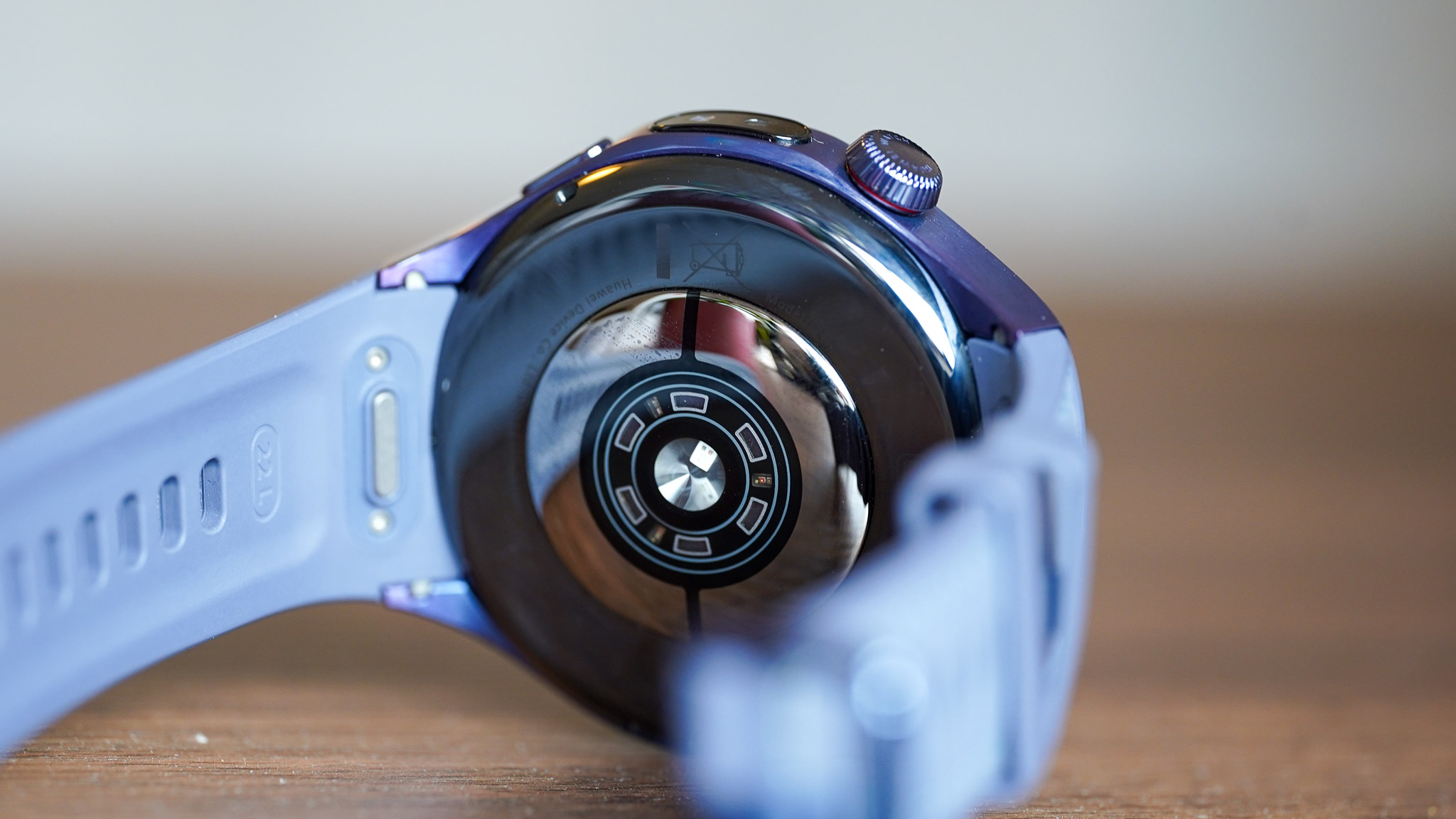
As good as the Watch 4 was, it was criticised for its rather bulky design. Huawei addressed this in the Watch 5, which is why the new wearable now comes in two sizes: 42mm and 46mm. I’ve been testing the latter (I’m always given these because I’m somewhat taller, despite not having meaty wrists), and thanks to its curved case design, it didn’t feel too large or awkward.
The bezel has shrunk to 2.2mm on the 46mm version with a 1.5-inch screen, while the 42mm version has a 1.38-inch display, and a 1.8mm thick bezel with an 82.5% screen-to-body ratio. The LTPO 2.0 panel has a maximum brightness of 3,000 nits – 50% brighter than the Apple Watch Series 10. The nifty display is protected by a ‘Spherical Sapphire’ glass front.
Get all the latest news, reviews, deals and buying guides on gorgeous tech, home and active products from the T3 experts
I found the display a joy to look at, and there is little to no delay between interactions initiated by you and the response from the Watch 5. I like the way the tiles get larger as you scroll through the notifications and apps, and the way the menu adds labels when you scroll down from the top.
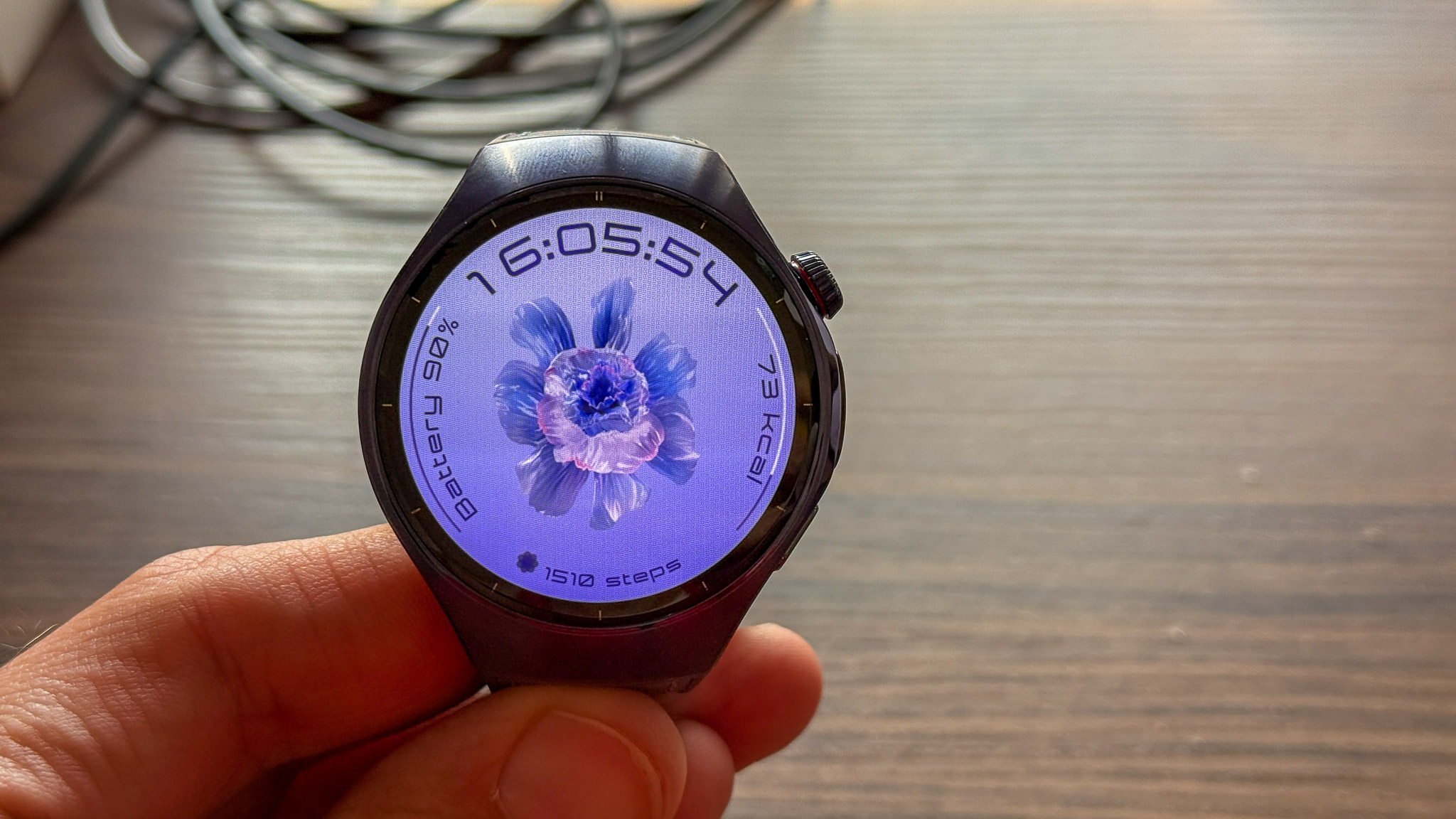
The LTPO 2.0 display stays quite visible even when viewed from an angle. Although again, why would anyone need to read their watch from a 45-degree angle? Nevertheless, the Watch 5’s 3,000-nit brightness does come in handy when looking at the screen from any angle.
The larger 46mm model either comes with an ‘aerospace-grade’ titanium or a 316l stainless steel case. The smaller 42mm version’s more premium option has a 904l stainless steel case (which Huawei claims is the same material Rolex uses), while the more affordable options sport a 316l stainless steel case, similar to the larger model.
The tested 46mm titanium model weighs 58g without the strap (and 82g with it), which makes it lighter than the Apple Watch Ultra 2 (~62g) but heavier than similar offerings from other brands, such as the OnePlus Watch 3 (49.7g w/o the strap) or the Xiaomi Watch S4 (44.5g w/o the strap).
The case's design remains similar to the Watch 4, with its serrated digital crown and push-button setup. The X-Tap module is a new addition, positioned between the two. This pressure-sensitive sensor is used to collect health data from your fingertips.
According to the brand, the fingertip is a better place to acquire ECG/ heart rate/ etc. readings as it tends not to contain a lot of melanin and isn’t covered in hair, among other things. Plus, you physically have to touch the button, which is a conscious action on the user’s behalf, making faulty readings less likely.
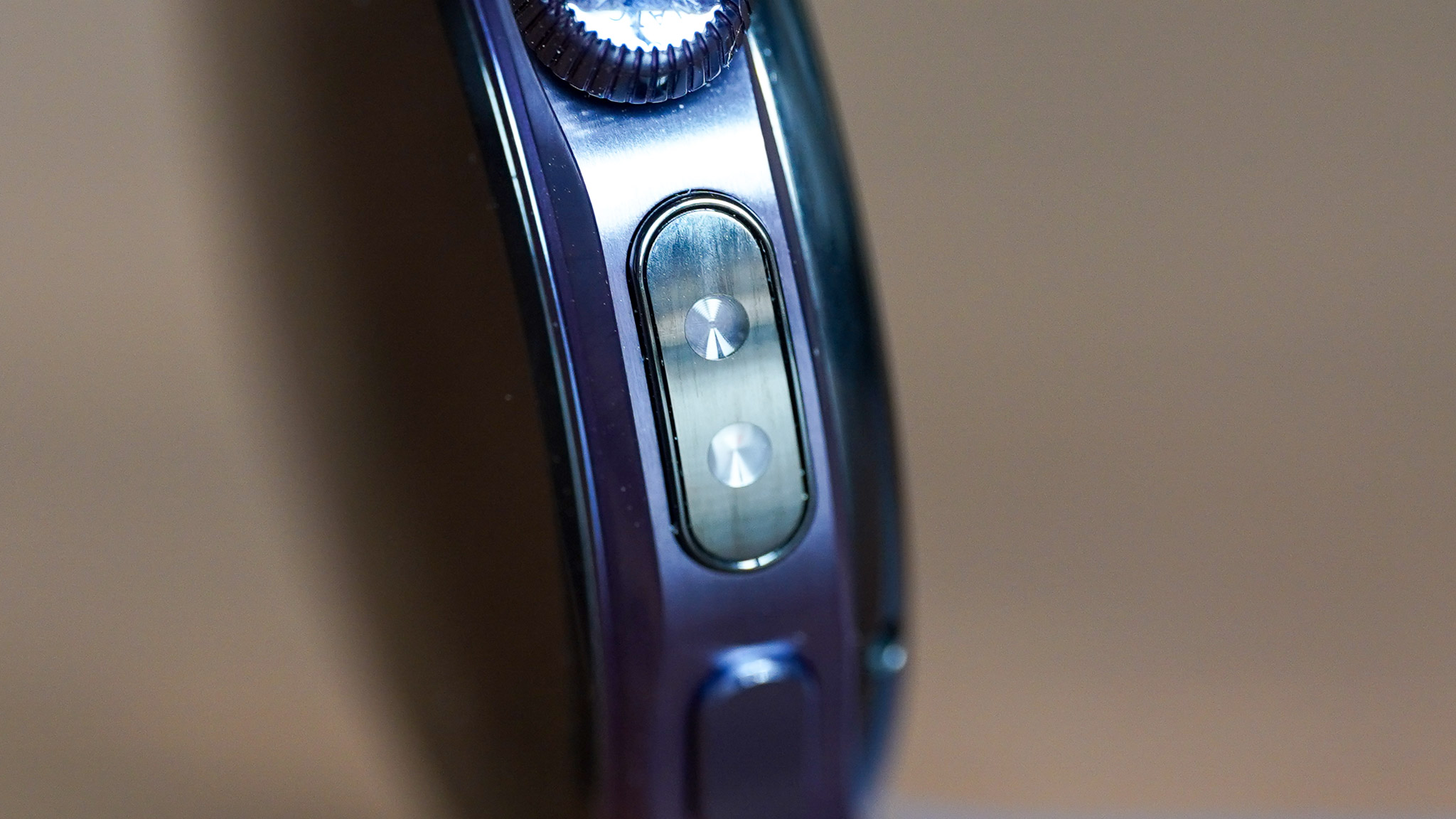
The X-Tap sensor sits flush with the case, and apart from a slight protrusion, it’s practically impossible to notice when you’re looking at the watch face. Looking at the watch from its profile, you can see it’s curved, allowing the Watch 5 to sit more comfortably on your wrist. Even though I prefer fabric straps for 24-hour wear, the quick-release composite band supplied with the watch feels comfortable against the skin.
The optical sensor at the back of the watch is the latest generation TruSense module. This system supposedly measures “60 health and fitness indicators, covering six of the body's major systems, and includes an emotional wellbeing component.”
Features
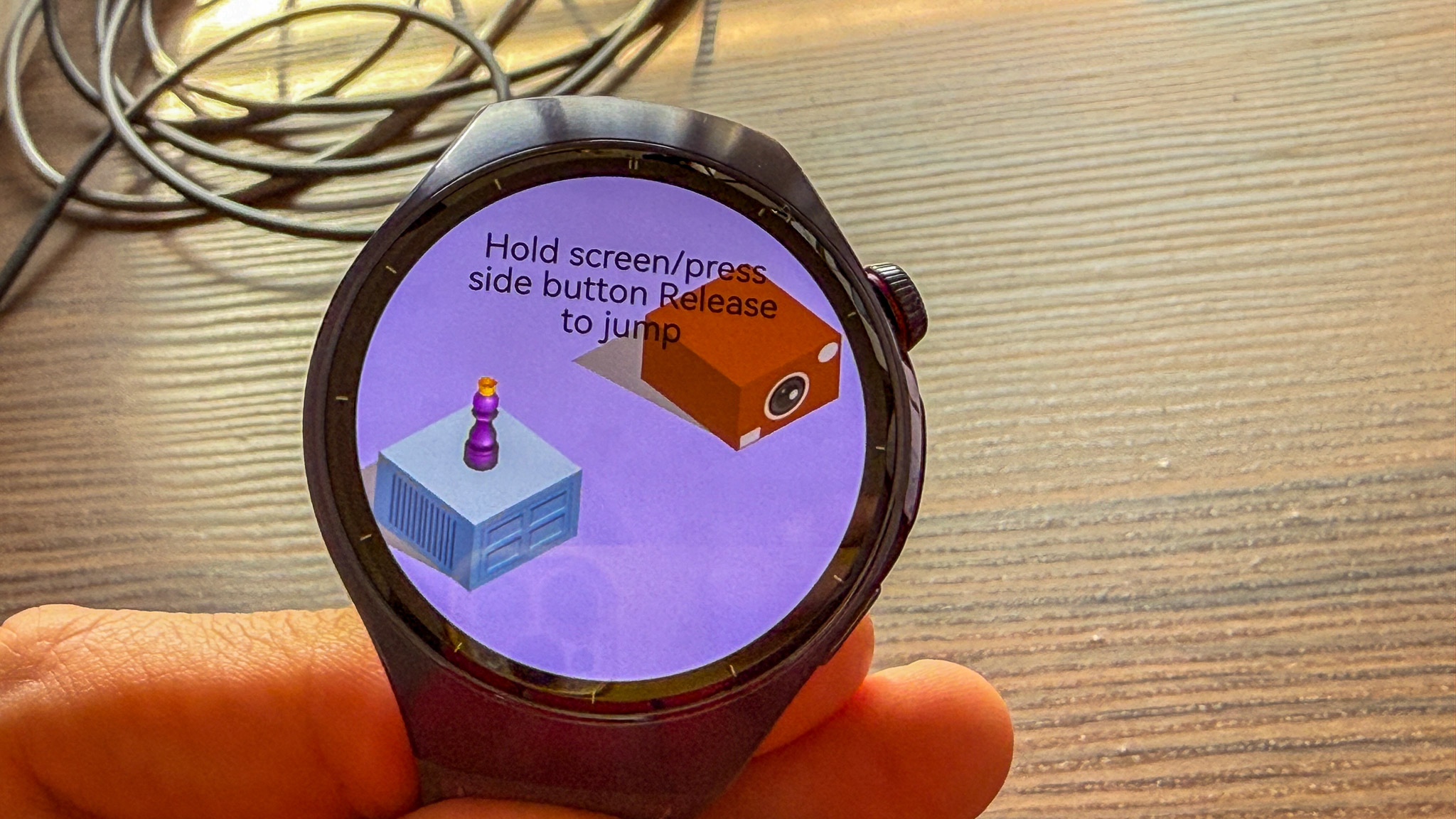
The Huawei Watch 5 focuses on health and fitness tracking, but it offers other features, too, including smart notifications, calendar, Petal Maps (Huawei’s own navigation app), calculator, etc. You can download additional apps from the Huawei AppGallery, which admittedly is sparser than Apple’s and Google’s app stores.
You can take calls directly on the watch, though, thanks to the Watch 5’s eSIM compatibility. Speaking of calls, you can use gesture control to accept or decline calls. The Huawei Watch 5 recognises two gestures: double tap and double swipe. Similar to the Apple Watch, the functionality of these is limited at best, and they can only be used with a select few apps.
Games are also available on the Huawei Watch 5, and some are more educational than others. Jump Jump, for example, uses the pressure-sensitive X-Tap sensor to move the little character along the screen, which is a fun way to teach people how to use it.
Health and fitness tracking
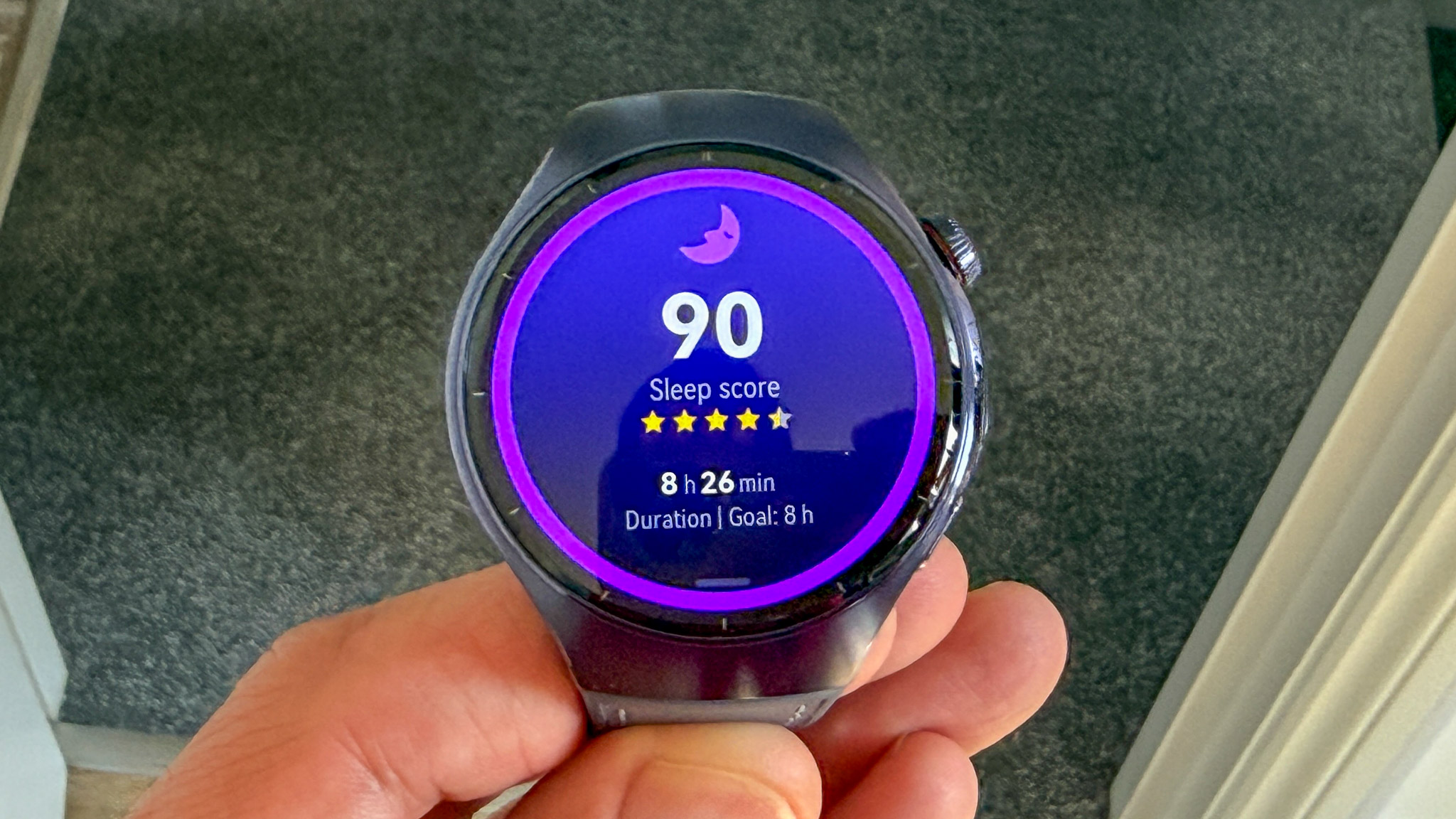
The Huawei Watch 5 is second to none on the smartwatch market in terms of health tracking. You can track everything, from heart rate and heart rate variability (a new metric) to skin temperature and arterial stiffness. Of course, the watch also tracks stress, sleep and general activity (e.g. steps).
One Tap Health Glance (OTHG), which can be performed in 60 seconds, now includes nine metrics: HR, HRV, SpO2, skin temperature, stress, ECG, arterial stiffness, respiratory overview and sleep breathing awareness. This quick test measures and logs all of these, providing a convenient way to check in every day.
Even though Huawei says the OTHG can be performed everywhere, the respiratory test requires you to take a deep breath and cough 2-3 times repeatedly, which people around might find off if you’re doing it in public. Not to mention, coughing in public without covering your mouth is a big no-no in my books (your other hand is busy holding the X-Tap sensor).
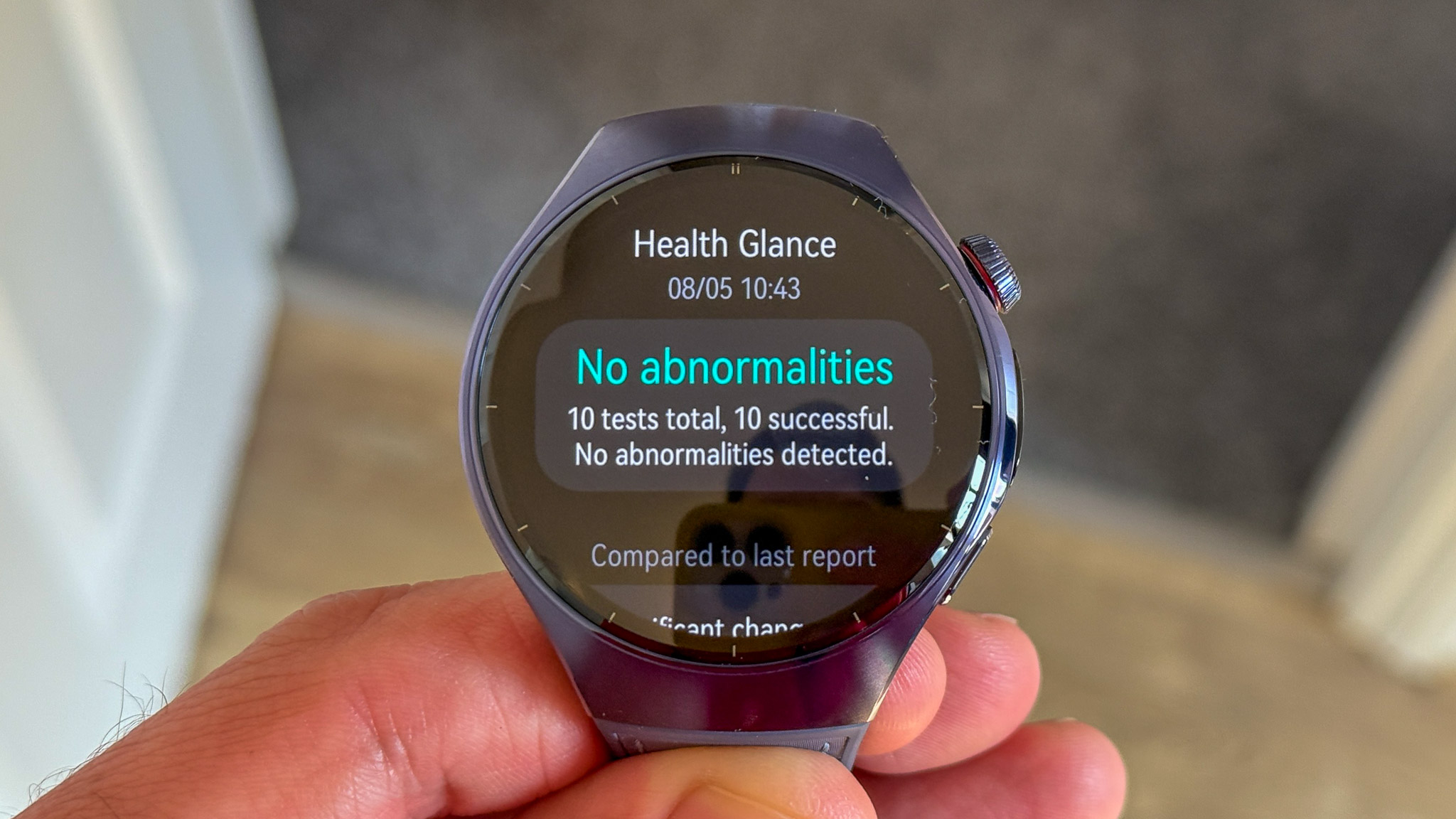
My only issue with using the OTHG on the Huawei Watch 5 is that it includes blood pressure, something this particular smartwatch can’t measure. What it does is take the last reading from the Huawei Health app, however old it might be, and assumes it is still your blood pressure. You can update blood pressure data manually or use the Huawei Watch D2 to collect this, but it’s a slightly convoluted system.
You can measure most of the metrics individually, should you wish to, and some are tracked by the watch automatically throughout the day. The Watch 5 can be pretty proactive about collecting data, which I appreciate. For example, it prompts you to take an ECG reading half an hour after exercise, as it is said to be the best time to see if there are any deviations.
Speaking of exercising, the Huawei Watch 5 has over 100 sports modes and covers most popular activities, as well as some odd choices such as ‘air walker’, ‘single bar’, ‘plaza dancing’ and tug-of-war. I can’t imagine a situation where I would need to track tug-of-war specifically as a standalone exercise, but professional tug-of-war athletes are in for the treat, and that’s for sure.
Accuracy
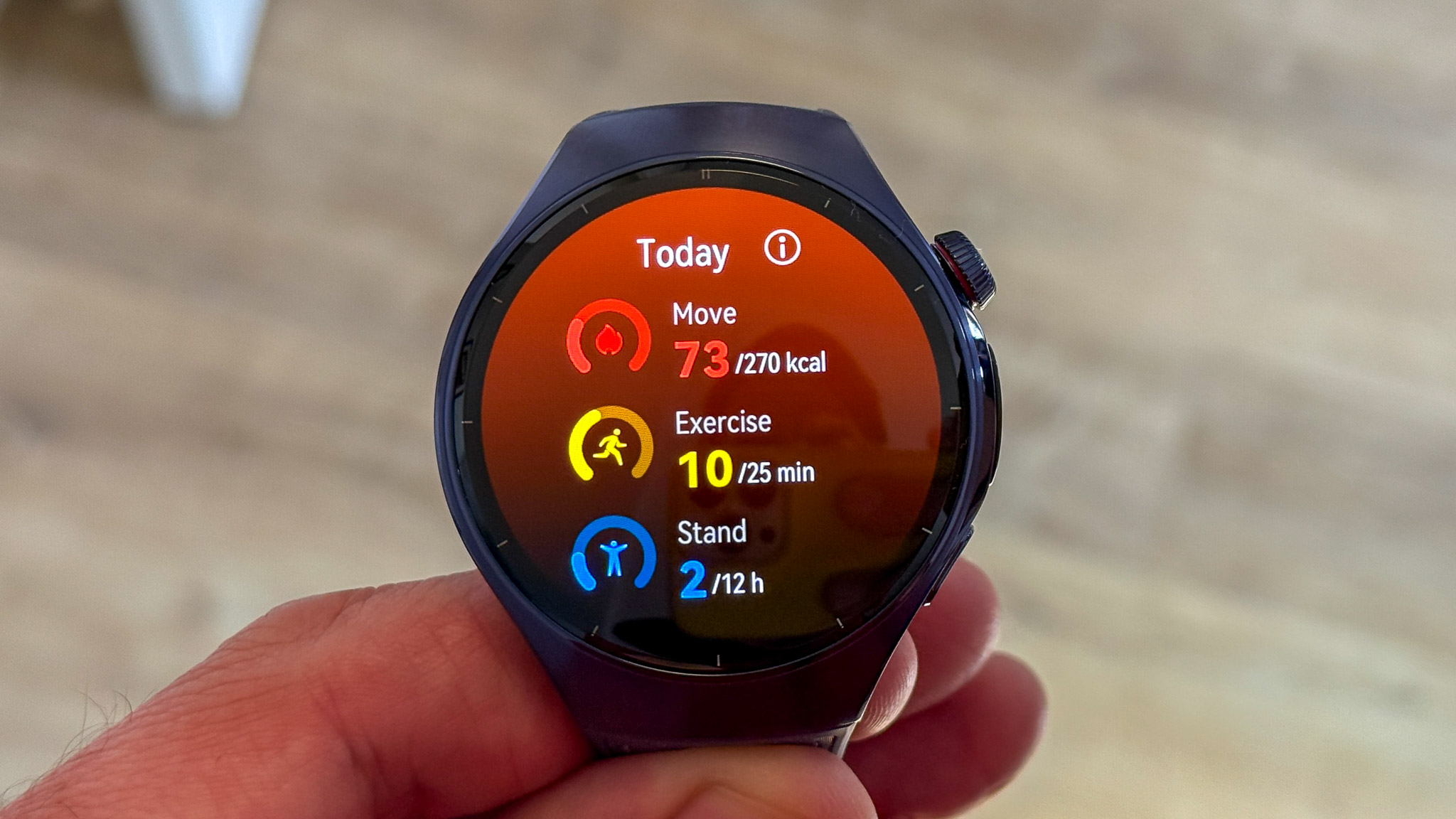
I found the health and fitness tracking accuracy of the Huawei Watch 5 excellent. It’s not as good as dedicated wearables that specialise in tracking specific metrics (e.g. Oura Ring 4 for sleep tracking), but as a wearable that does it all, it does a decent job of keeping tabs on all your bodily functions (well, maybe not all of them, but the ones smartwatches can track).
It tracks sleep well. The Watch 5 gives you a sleep score and breaks down the different sleep stages, as well as keeping track of heart rate variability and your respiration rate. The sleep stages don’t directly correspond with my Oura data (which I find accurate), but the overall picture the Watch 5 paints is still consistent enough to be useful.
Stress tracking is also good, although it’s one of those metrics I find impossible to cross-reference. Most wearables check for physical symptoms and often report stress when warm and sitting still. For example, if you forget to take your jumper off for some reason, your temperature will rise and so will your respiration rate, suggesting you’re stressed, whereas you’re just hot and bothered.
Fitness tracking is on point, especially during steady cardio activities like running. I compared the HR data with my Garmin Forerunner 965, and the two wearables looked very similar. GPS accuracy looked fine, too, although I haven’t used the watch in a particularly challenging global positioning environment, so I can’t say how well it would perform in densely built areas.
Battery life and charging
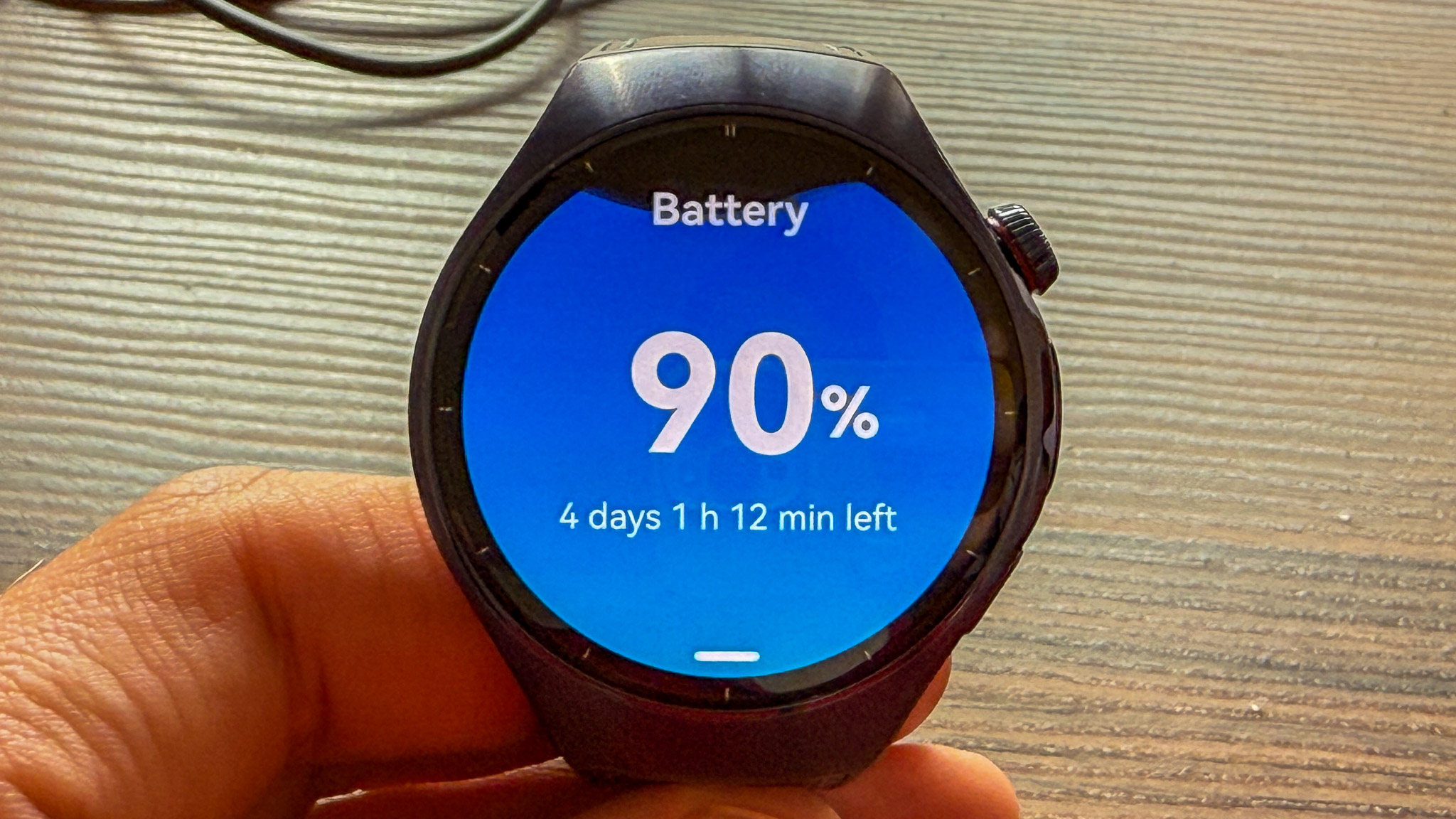
The battery life differs between the two Huawei Watch 5 models, which isn’t unusual among smartwatches. After all, smaller cases can house smaller batteries. The 42mm version has a 3-day battery life, while the larger 46mm models can function for up to seven days on a single charge in standard mode. The Ultra-long Battery Life mode extends this to seven and 10 days, respectively.
The watches support fast charging. The 42mm version charges in 60 minutes and the 46mm in 90 minutes from zero to 100 per cent. You can’t top up the battery by popping the Watch 5 on the charger for five minutes, but considering it has a longer battery life than just a day, this won’t be an issue.
I found the actual battery life of the tested 46mm version close to the official numbers. Huawei’s ‘normal’ usage usually refers to quite heavy usage in my case; I don’t look at the watch for two hours a day, and use all the apps under the sun. As such, battery life with some GPS usage easily reaches seven days, although officially it shouldn’t. The 90-minute charging time sounds about right, too.
Verdict

The Huawei Watch 5 isn’t just a smartwatch; it’s a doctor on your wrist. The Chinese brand’s latest wearable certainly makes me rethink what I expect from a smartwatch regarding health functionality and almost makes me forget the shortcomings of Huawei’s app system. It’s not like I’m desperate to be able to pay with my smartwatch, but I guess it would be nice to be able to do so.
That said, Huawei has clearly prioritised what it does best here: pushing the boundaries of health tracking, refining the hardware experience, and delivering a wearable that feels more premium and more proactive than ever.
The new X-Tap sensor is a genuinely innovative addition that encourages more accurate, intentional readings, and while the respiratory test still needs some public decency tweaks, the rest of the One Tap Health Glance system is both clever and convenient.
The gesture controls are fun but undercooked, and it’s still a shame that blood pressure tracking is reliant on another device. Still, Huawei is edging ever closer to an all-in-one health tracker that doesn’t just log your stats – it tries to understand you.

Matt Kollat is a journalist and content creator who works for T3.com and its magazine counterpart as an Active Editor. His areas of expertise include wearables, drones, fitness equipment, nutrition and outdoor gear. He joined T3 in 2019. His byline appears in several publications, including Techradar and Fit&Well, and more. Matt also collaborated with other content creators (e.g. Garage Gym Reviews) and judged many awards, such as the European Specialist Sports Nutrition Alliance's ESSNawards. When he isn't working out, running or cycling, you'll find him roaming the countryside and trying out new podcasting and content creation equipment.
You must confirm your public display name before commenting
Please logout and then login again, you will then be prompted to enter your display name.